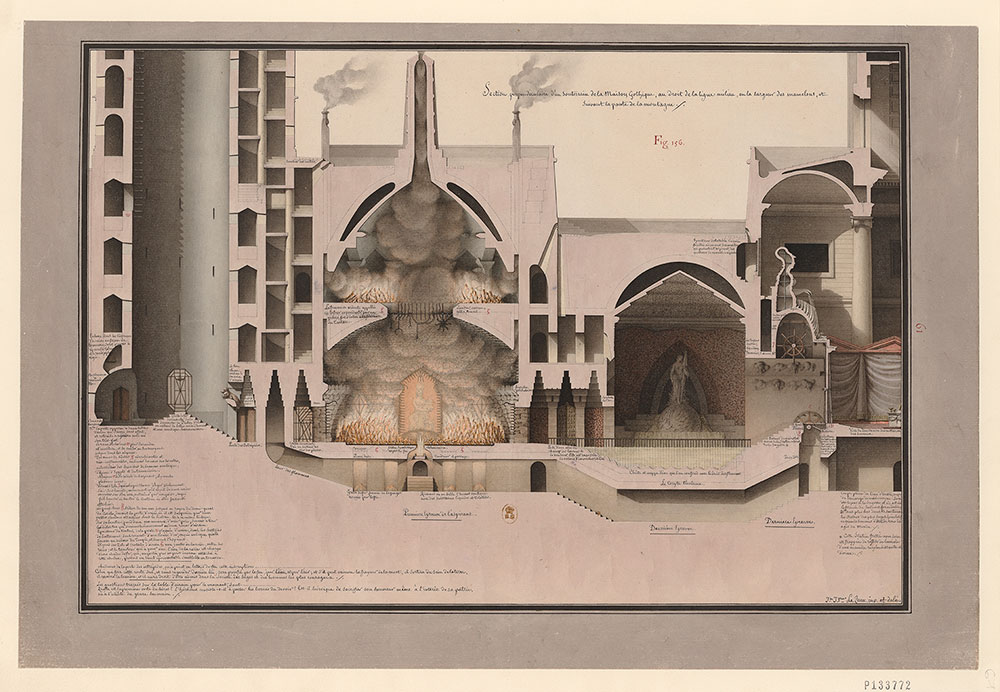
Freemasonry was a prominent cultural movement in the France of Lequeu’s day. While he seems to have been part of the brotherhood and knew the secretive Masonic initiation rites, it is not known to which lodge he belonged.
This structure, located behind a temple devoted to Minerva (seated at right), is designed for initiations into the “Society of Sages and Most Courageous Men.” According to Lequeu’s annotations, the ritual to join the brotherhood required initiates to overcome their fear of death through trials by fire, water, and air in subterranean chambers before emerging into the light. Each chamber would be equipped with complex mechanisms meant to produce claps of thunder.
Jean-Jacques Lequeu (1757–1826)
Underground of a Gothic House, from Civil Architecture, 1804–11
Pen and brown and black ink, brown and gray wash, watercolor
Bibliothèque nationale de France, Departement des Estampes et de la photographie
Jennifer Tonkovich: The Masonic Brotherhood emerged in France in the 1720s and continued to grow in popularity as the century progressed. The Brotherhood admitted male members from all social classes as well as foreigners, and as a result, the Masons were seen with suspicion by the monarchy and the Catholic Church. Members were associated with lodges or meeting places for local chapters. The democratic nature of the lodges became associated with support for the revolution, and thus membership carried with it a whiff of danger. While we know Lequeu was intrigued by the Masons, recent research has not concluded that he belonged to a particular lodge. Lequeu's preoccupation with Masonic rites informed his work. Ancient Egyptian practices shaped some of the rituals in Masonic lodges and a general fascination with Egypt flourished, after the 1731 publication of the Abbé Terrasson's 6th Volume, Life of Sethos, which purported to be the translation of a lost ancient manuscript, but was actually a fantasy novel. This connection between contemporary ritual and the rites of the ancient world seems to have fascinated Lequeu, who had keenly felt a deep connection to the past. The clandestine rituals of the lodge fueled this design for an underground series of chambers filled with challenges for the initiate.
